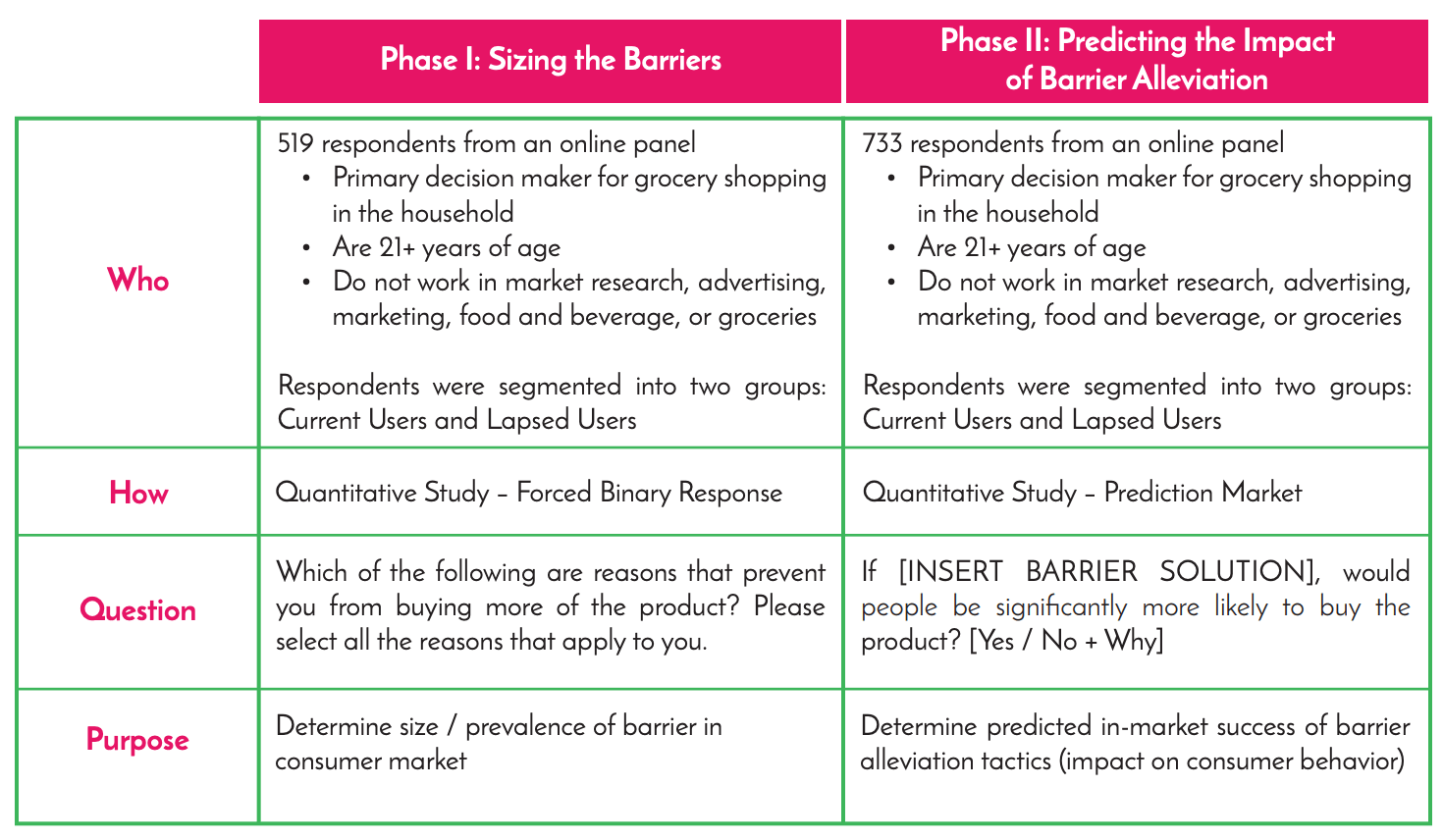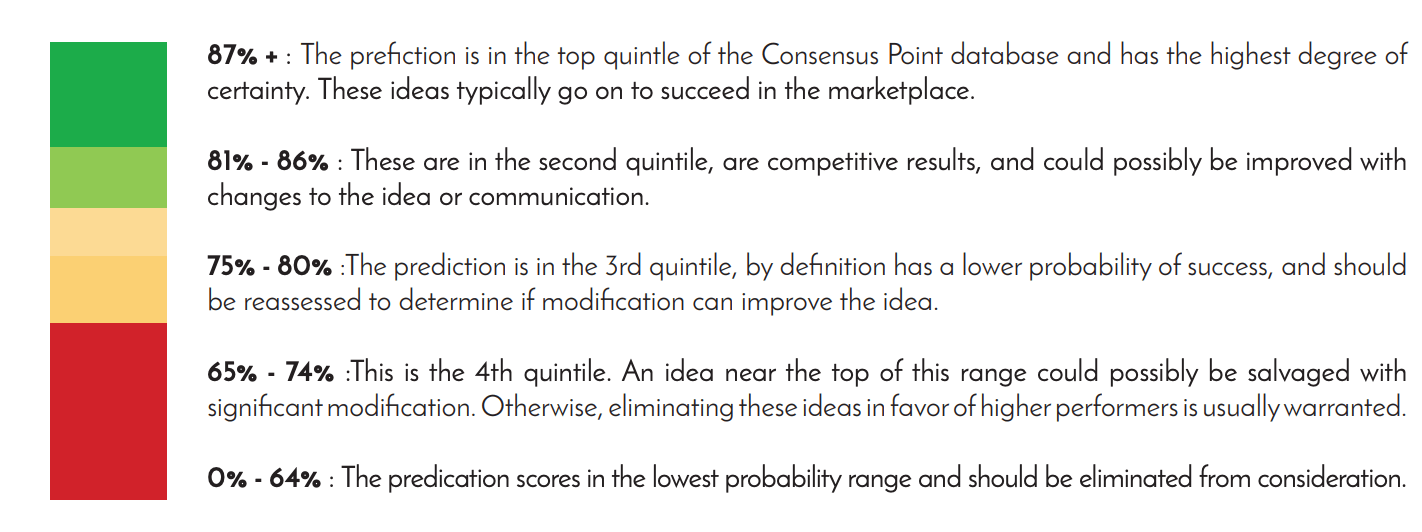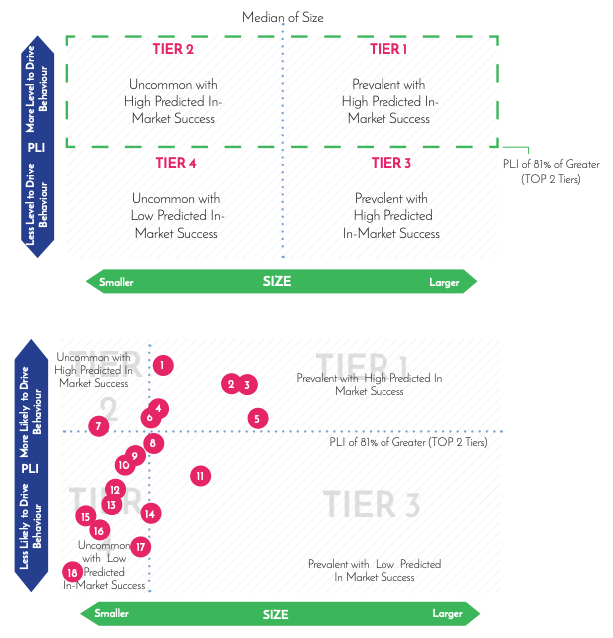Case Study
Background
A national CPG company wanted to assess the purchase barriers and how to alleviate those barriers for one of their most popular sausage products.
The company first conducted an online metaphor elicitation exercise, a System 1 methodology, to determine the drivers and barriers to usage in the category. The online metaphor elicitation results uncovered both expected and more nuanced findings.
In order to prioritize their efforts, the client needed to understand the size of each barrier and the impact of alleviation among lapsed and non-buyers.
MDRG solved this ask with a two-phase approach:
- Phase I: Size the Barriers
- Phase II: Predicting the Impact of Barrier Alleviation
WHOLE MIND APPROACH
Tapping into the consumer’s decision-making process through both System 1 and System 2 is what sets MDRG apart. In Phase I, MDRG deployed an online survey to 519 respondents and asked questions don't change the System 2 objectives of:
- Determine the size of each barrier
- Uncover qualitative, nuanced perspectives on why consumers will change their behavior if barrier is removed
To bypass what consumers think via rational thought processes and uncover some of the emotional associations of the brand and category, MDRG executed a Prediction Market exercise with 733 consumers in the survey. System 1 objectives included:
- Quantify the predicted in-market success of each barrier’s alleviation tactic (likelihood that consumer will behave differently if barrier is removed)

PREDICTION MARKET METHODOLOGY
Within a prediction market, truly engaged participants “bet virtual currency” on how a targeted audience will behave, not on their personal preferences. Predication markets use “gamification” to engage participants. As a result, prediction markets have a history of more accurately predicting real world events than traditional surveys
Participants are encouraged to “self-select” and only answer questions where they have enough knowledge to make a judgement. Participants answer not only with their own “opinion”, but also “judgement” on how a target audience will behave, and their rationale about “why”. Prediction markets are often used to predict future trends, optimize agile marketing concepts, and test early stage ideas and concepts.
Prediction Markets yield the following predictive metrics:
- Percent of people in the proportion of participants betting for and against each outcome.
. - The size of bets on each question can reflect their levels of confidence in their answer. - Qualitative key verbatim comments on positive and negative predictions.
- Prediction Likelihood Index (PLI) is an overall summary probability, calculated real-time based on participants’ collective betting for each possible outcome. Ranges from 0% to 100%
- PLI is the probability of an outcome happening and is compared a global database with over 13 thousand yes/no predictive questions.
- Outcomes can be then interpreted by the Prediction Likelihood Index (PLI) quintile tiers:

KEY INSIGHTS FROM THE RESEARCH
In Phase I, MDRG tested 44 potential barriers to buying the sausage product. After determining the size of each barrier, MDRG and the client selected 18 barriers to test in Phase II, the prediction market.
The barriers fell into one of the following categories:

STRATEGIC RECOMMENDATIONS:
MDRG developed a method to analyze the data graphically by plotting the each barrier’s size from Phase I on the x-axis, and the predicted in-market success rates of each barrier from Phase II on the y-axis.
The top right quadrant represents larger barriers with alleviation tactics that have high predicted in-market success. These are considered the Top Tier barriers, and ones MDRG definitely recommends attacking using the proposed solution or one similar and should expect obvious results.
The top left quadrant represents barriers with a smaller stated size/prevalence in the market, but with alleviation tactics that have relatively high in-market success rates. These are considered Tier 2 barriers, and ones MDRG recommends attacking after or in tandem with the Tier 1 barriers, with equal or less resource allocation. These barriers may not be obvious to all, but could significantly change consumer behavior and purchase intent.

Are you eager to stay ahead of the curve in your industry? Sign up for our monthly insights email and gain exclusive access to valuable market research, industry trends, and actionable recommendations delivered directly to your inbox.
Topics from this blog: CPG Market Research Brand Case Study